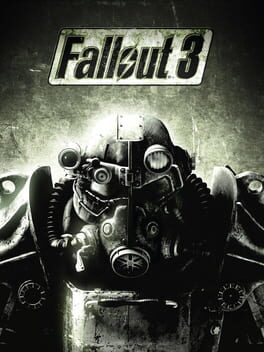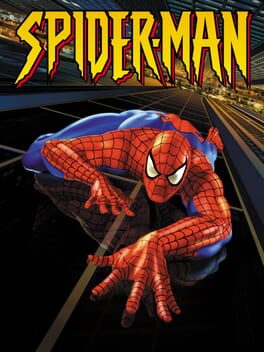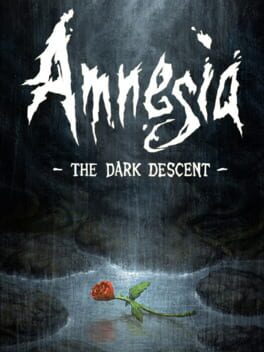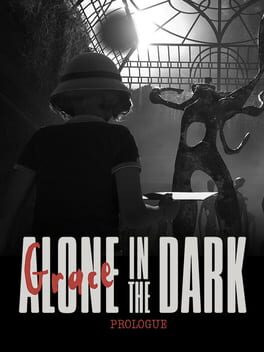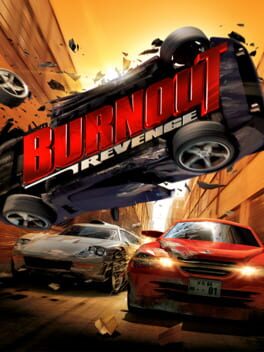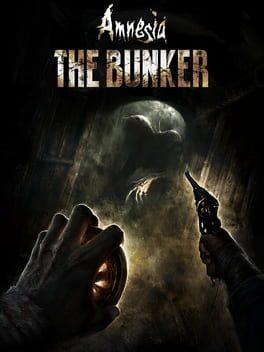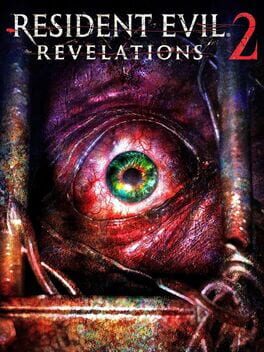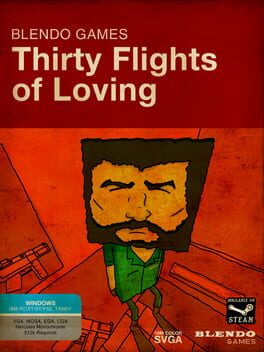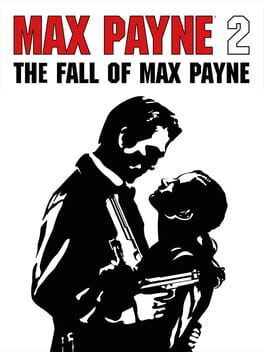109 Reviews liked by minusforever
Fallout 3
2008
Competent in establishing a ghostly east coast Americana (as one would hope), but falls apart when attempting to zoom in on any stronger narrative strand. Bethesda comes off as apathetic towards truly establishing a macroscale narrative to grasp on to in regard to empowering the self-insert protagonist's autonomy and motivation to reshape the Capitol Wasteland. Heritability looms over the main story with much of what drives the player's exploration being hints towards answers as to the nature of your existence--where you were actually born, how much you truly are in the shadow of another, why you were kept miles away from the truth, etc.--but you never walk away as a character that grew up with a father who cared for you over decades, with James's dialogue being largely restricted to small passages over his technological goals for the Capitol Wasteland and grief for a love whose face is left a mystery (at least up until New Vegas).
So much of the main story being apathetically built on heritability is perhaps what dooms it: the past, where James heavily looms over as a parental figure motivating much of your decision-making, is collapsed into three sections built solely of character creation and tutorials to their name while being broken up by title cards as the only gesture towards a longer temporal span with little of who you were or are now to be gleaned from these elliptical interludes. Meanwhile, the future denies your narrative footprints to be truly weightful enough in comparison to your father's shadow that you continue to live under. The ending cards more clearly outline the flaws of the "future" here: those who walk the Capitol Wasteland cannot express their future in their own words, and their faces can only be deployed as the stinger to the list of good deeds or sins, respectively, honoring or tainting your family tree that the narrator speaks from. You don't truly "influence" the Wasteland; your legacy is built off of how much you truly respected the forces who helped bring you into the Wasteland.
Much more can be said about the heavily flawed DLC, especially when weighed in comparison to New Vegas. Operation Anchorage displays Bethesda's worst instincts in comedy with none of post-apocalyptic America to act as the contrast to jingoistic military propaganda, while Mothership Zeta only desires to make a mockery out of sci-fi with little punchlines to draw from outside of alien gibberish. The Pitt and Point Lookout fare better in emphasizing the Capitol's relative optimism in comparison to what's outside of its boundaries for those unluckier, but finding anything to establish the political structures that led to the outcomes within these add-on cities is a stretch (the latter being somewhat more successful here). Broken Steel is a half-written apology for those disappointed by the base game preventing them from seeing their footprints in their brought upon Wasteland, with its goal only serving to act as a rushed drive towards final domination via energy weaponry. None of what's found here, even in the best case of Point Lookout, can match up to New Vegas's engaging explorations of the wider west coast, whether in Dead Money with its paranormal holograms haunting the skeletons of the Sierra Madre or in Honest Hearts drawing the persistent threat of colonization into a post-apocalyptic America.
I can't fully bring myself to work against what exists here. Fallout, as a concept, rarely fails to allure the player into exploring the gestures towards another America that lived full lives in your footsteps before disappearing in a flash, whether in the emptied out diners or dormant Metro robots waiting to be awoken from their mechanical slumber again. However, it would be hard to deny the disappointment brought upon by Bethesda's narrative failures, with Obsidian's future work in the series existing at the edges as the force that only truly realizes what could compose a 3D Fallout. Before that, though, is work left unfinished and only a sandbox for you to click on heads in V.A.T.S with.
So much of the main story being apathetically built on heritability is perhaps what dooms it: the past, where James heavily looms over as a parental figure motivating much of your decision-making, is collapsed into three sections built solely of character creation and tutorials to their name while being broken up by title cards as the only gesture towards a longer temporal span with little of who you were or are now to be gleaned from these elliptical interludes. Meanwhile, the future denies your narrative footprints to be truly weightful enough in comparison to your father's shadow that you continue to live under. The ending cards more clearly outline the flaws of the "future" here: those who walk the Capitol Wasteland cannot express their future in their own words, and their faces can only be deployed as the stinger to the list of good deeds or sins, respectively, honoring or tainting your family tree that the narrator speaks from. You don't truly "influence" the Wasteland; your legacy is built off of how much you truly respected the forces who helped bring you into the Wasteland.
Much more can be said about the heavily flawed DLC, especially when weighed in comparison to New Vegas. Operation Anchorage displays Bethesda's worst instincts in comedy with none of post-apocalyptic America to act as the contrast to jingoistic military propaganda, while Mothership Zeta only desires to make a mockery out of sci-fi with little punchlines to draw from outside of alien gibberish. The Pitt and Point Lookout fare better in emphasizing the Capitol's relative optimism in comparison to what's outside of its boundaries for those unluckier, but finding anything to establish the political structures that led to the outcomes within these add-on cities is a stretch (the latter being somewhat more successful here). Broken Steel is a half-written apology for those disappointed by the base game preventing them from seeing their footprints in their brought upon Wasteland, with its goal only serving to act as a rushed drive towards final domination via energy weaponry. None of what's found here, even in the best case of Point Lookout, can match up to New Vegas's engaging explorations of the wider west coast, whether in Dead Money with its paranormal holograms haunting the skeletons of the Sierra Madre or in Honest Hearts drawing the persistent threat of colonization into a post-apocalyptic America.
I can't fully bring myself to work against what exists here. Fallout, as a concept, rarely fails to allure the player into exploring the gestures towards another America that lived full lives in your footsteps before disappearing in a flash, whether in the emptied out diners or dormant Metro robots waiting to be awoken from their mechanical slumber again. However, it would be hard to deny the disappointment brought upon by Bethesda's narrative failures, with Obsidian's future work in the series existing at the edges as the force that only truly realizes what could compose a 3D Fallout. Before that, though, is work left unfinished and only a sandbox for you to click on heads in V.A.T.S with.
Half-Life
1998
Maddening and menial at times, but the helplessness of it is mesmerizing to a degree where its blemishes can almost be overridden. Audio design is a specific technical feature to this in that it influences the perceived helplessness; "crunchy" textures underlie the Houndeye's sonic windups and the Vortigaunt's lightning strikes, among other events, to form loud, indistinguishable sensory overload among crowds of enemies that can only be responded to with uncalculated shotgun blasts and long jumps. Being faced with enemy hordes in a first-person framing is not an innovation here (DOOM and Quake, of course, being inspirations) but, unique to its antecedents, there is a difficultly shaking off a feeling that for all of the experimental weapons to vaporize others with, Freeman's (or, rather, the self-insert for the player's confusion and franticness to be projected onto) lack of preparation is clear as day.
Xen, perhaps contrary to wideheld negative views among those surprised by its sudden shift in environmental curation (or, rather, a perceived lack of), suceeds in some ways to enhance helplessness giving the scarcity of its space with enemy crowds being the only ones to fill it. The gift of the Long Jump Module messages to the player that, similar to DOOM and alike, speed and momentum are the only antidotes to the bullseye that is Freeman in such a wide empty space as Xen's outside with a lack of companions to be found. However, the internals of Xen, specifically starting within Interloper, finds itself beset with a slippery physics engine that transforms platforming into a tedious task with little room for error or enjoyment to be found in pulling off such platforming. Jumps via the Xen Trampoline feel scattershot with trial-and-error required to understand how exactly to manipulate the GoldSrc engine's idea of momentum in order to find success in reaching far platforms, which especially makes the final boss fight almost a test of luck.
The limits of GoldSrc are worth re-emphasizing here given its quirks also creating potential frustration outside of Xen. Simple tasks such as moving crates backwards or sideways, for example, become unintuitive as a result of GoldSrc wildly pulling crates outside of the player's grasp. At certain points, Freeman may stick to corners while in cover from enemy gunfire which forces the player to reload their last save. Even moving can become a strange task at times due to Freeman's speed, which can prove tricky with areas that require almost pinpoint precision in navigating tight areas with deep depths.
Still, the franticness of moving through Black Mesa and Xen almost snuff out residual exhaustion from such engine frustrrations once they are dealt with. The aforementioned influence from iD Software gameplay is effectively recontextualized in a horror framing that frames combat as a last-measure tool which barely ensures survival rather than as a confident source of energy for the player's mindset. Shotgun blasts spread through Xen not as a measured signal of dominance, but rather as almost minute threats to an ecosystem at the brink of spreading its tentacles into Earth's vents and dams.
Xen, perhaps contrary to wideheld negative views among those surprised by its sudden shift in environmental curation (or, rather, a perceived lack of), suceeds in some ways to enhance helplessness giving the scarcity of its space with enemy crowds being the only ones to fill it. The gift of the Long Jump Module messages to the player that, similar to DOOM and alike, speed and momentum are the only antidotes to the bullseye that is Freeman in such a wide empty space as Xen's outside with a lack of companions to be found. However, the internals of Xen, specifically starting within Interloper, finds itself beset with a slippery physics engine that transforms platforming into a tedious task with little room for error or enjoyment to be found in pulling off such platforming. Jumps via the Xen Trampoline feel scattershot with trial-and-error required to understand how exactly to manipulate the GoldSrc engine's idea of momentum in order to find success in reaching far platforms, which especially makes the final boss fight almost a test of luck.
The limits of GoldSrc are worth re-emphasizing here given its quirks also creating potential frustration outside of Xen. Simple tasks such as moving crates backwards or sideways, for example, become unintuitive as a result of GoldSrc wildly pulling crates outside of the player's grasp. At certain points, Freeman may stick to corners while in cover from enemy gunfire which forces the player to reload their last save. Even moving can become a strange task at times due to Freeman's speed, which can prove tricky with areas that require almost pinpoint precision in navigating tight areas with deep depths.
Still, the franticness of moving through Black Mesa and Xen almost snuff out residual exhaustion from such engine frustrrations once they are dealt with. The aforementioned influence from iD Software gameplay is effectively recontextualized in a horror framing that frames combat as a last-measure tool which barely ensures survival rather than as a confident source of energy for the player's mindset. Shotgun blasts spread through Xen not as a measured signal of dominance, but rather as almost minute threats to an ecosystem at the brink of spreading its tentacles into Earth's vents and dams.
Spider-Man
2000
severe distaste for the effect this had on horror in gaming for a decade or more aside, i must admit that this is generally really solid. i had wondered how this might go for me coming back to it after some years away but i think i liked it just about as much as before, if not a bit extra.
Brennenburg Castle as a setting is a landmark in the medium in terms of aesthetics and an absolute joy to navigate through. the excellent use of lighting on top of the already powerful atmosphere meshes together well and makes this really impactful (until you see the monsters up close tbh)
puzzles are good for a game along these lines but are lacking in feedback at times. with some of the larger ones going across a whole hub and the levels it leads out into it isn't always clear what you just did or if you have made an effect of any kind. one notorious part of this replay was when i couldn't get an elevator to lower to a midway point and it was because i didn't fully match switches up like i had thought as a result of ones that i thought were going upwards were instead facing towards the center. not going to blame the game completely but with multiple moving parts i found myself moving between the different puzzle elements until i found ones that were still interactable which was a drag.
as things progress things take a turn for the more eccentric which flies in the face of how dark the background reveals itself to be. not sure how into it i am but not everything lands the ending and it doesn't tank the whole experience for me.
SOMA stays unbothered.
Brennenburg Castle as a setting is a landmark in the medium in terms of aesthetics and an absolute joy to navigate through. the excellent use of lighting on top of the already powerful atmosphere meshes together well and makes this really impactful (until you see the monsters up close tbh)
puzzles are good for a game along these lines but are lacking in feedback at times. with some of the larger ones going across a whole hub and the levels it leads out into it isn't always clear what you just did or if you have made an effect of any kind. one notorious part of this replay was when i couldn't get an elevator to lower to a midway point and it was because i didn't fully match switches up like i had thought as a result of ones that i thought were going upwards were instead facing towards the center. not going to blame the game completely but with multiple moving parts i found myself moving between the different puzzle elements until i found ones that were still interactable which was a drag.
as things progress things take a turn for the more eccentric which flies in the face of how dark the background reveals itself to be. not sure how into it i am but not everything lands the ending and it doesn't tank the whole experience for me.
SOMA stays unbothered.
A very minor experience demonstrating Alone in the Dark may turn out to be a solid early 2010s AA release with a heart, complete with unnerving dead-eyed character models (look at Grace in the poster!), some real iffy contextual interactions (the stairs lol) and plodding movement. With Mikael Hedberg (SOMA) writing, I'm still looking forward to the full game and am curious about how they'll blend the surreal southern gothic tone with the creature-feature aspects, which are a little clumsily combined here.
Myth is a unique series in the annals of the strategy genre. The factors that make it unique limit its appeal to what I imagine to be the typical RTS fan, but they have also granted it an enduring cult status in the eyes of the few (enough, at least, to secure updates to modern systems in the form of Project Magma, though not enough to save it from the abandonware limbo). They superficially resemble RTS games that were popular at the time, but any base building or unit construction has been stripped away. There are no resources to manage other than your units, which number in the low tens at most, and there is no opportunity to replenish them during a mission (outside of scripted reinforcements, which are rare). It goes without saying that each unit is therefore very, very precious. Myth also boasts of an innovative engine that treats each projectile as a separate physics object, subject to gravity and weather effects. All of these factors together place overall gameplay emphasis squarely on battlefield tactics: formations, positioning (to take advantage of terrain as well as avoid friendly fire), and various kinds of tactical maneuvers. The number of unit types is not large, but there is no redundancy, and nothing really missing aside from a scout-type unit which could add a thin layer of strategic depth.
In typical Bungie fashion, there is a lot of effort put into story presentation in the campaign. Granted, it is typical dark fantasy shlock. For, uh, mythical reasons, an army of undead is on the march, set to annihilate the human race. Hope is, naturally, all but lost. Thankfully, the actual missions sell this scenario as much as the impressive narration and drawings that introduce them. The campaign is notoriously hard, confronting the player with overwhelming amounts of undead resistance from an early stage. Early missions have a good variety of objectives, and the player is well-advised to choose their battles wisely in completing them. As the campaign drags on, however, more and more missions force the player to hold a position while fighting off wave after wave of opposition, or march from point A to point B while killing everything in between. These become extremely punishing, with the last mission in particular being a brutal slog where all but the most minor mistakes force a reload. Mission briefings are more about storytelling than anything else, so success becomes a matter of memorizing opposition forces rather than any kind of strategic planning. The game's tutorial basically tells you to savescum, so there's that.
Soulblighter is a strict upgrade over The Fallen Lords, but the games share technical flaws like shoddy pathfinding (Soulblighter's is way better but still) and a camera that is too close to the ground (which also tends to limit the terrain depth promised by the game's physics). Soulblighter's map design is much better as a whole, but should you for some reason want to play The Fallen Lords' campaign it's been ported to Soulblighter as a mod.
As a single-player experience Myth has a lot going for it: a strong theme and unique playstyle that is accessible to non-strategy fans, but challenging enough to take some dedication to get through. It's certainly not deep, but there's a reason I've kept knocking my head against it over the years. Multiplayer Myth looks like bloody chaos in the best way possible, but unfortunately I have been unable to get any of my friends to be interested in the game. Miraculously there are still servers running for online play, so maybe I'll hop onto one of those at some point.
In typical Bungie fashion, there is a lot of effort put into story presentation in the campaign. Granted, it is typical dark fantasy shlock. For, uh, mythical reasons, an army of undead is on the march, set to annihilate the human race. Hope is, naturally, all but lost. Thankfully, the actual missions sell this scenario as much as the impressive narration and drawings that introduce them. The campaign is notoriously hard, confronting the player with overwhelming amounts of undead resistance from an early stage. Early missions have a good variety of objectives, and the player is well-advised to choose their battles wisely in completing them. As the campaign drags on, however, more and more missions force the player to hold a position while fighting off wave after wave of opposition, or march from point A to point B while killing everything in between. These become extremely punishing, with the last mission in particular being a brutal slog where all but the most minor mistakes force a reload. Mission briefings are more about storytelling than anything else, so success becomes a matter of memorizing opposition forces rather than any kind of strategic planning. The game's tutorial basically tells you to savescum, so there's that.
Soulblighter is a strict upgrade over The Fallen Lords, but the games share technical flaws like shoddy pathfinding (Soulblighter's is way better but still) and a camera that is too close to the ground (which also tends to limit the terrain depth promised by the game's physics). Soulblighter's map design is much better as a whole, but should you for some reason want to play The Fallen Lords' campaign it's been ported to Soulblighter as a mod.
As a single-player experience Myth has a lot going for it: a strong theme and unique playstyle that is accessible to non-strategy fans, but challenging enough to take some dedication to get through. It's certainly not deep, but there's a reason I've kept knocking my head against it over the years. Multiplayer Myth looks like bloody chaos in the best way possible, but unfortunately I have been unable to get any of my friends to be interested in the game. Miraculously there are still servers running for online play, so maybe I'll hop onto one of those at some point.
Burnout Revenge
2005
This is a fourteen-year-old’s fever dream after glimpsing a poster for fast & furious: no characters, real cars, stakes, narrative, just a visceral piss-colour-graded world tour that could only have emerged from a series building upon itself in isolation without any real-world reference: an automotive dream-world, an underworld to Forza’s sunny utopia.
I yearn for a timeline where Burnout wasn’t abandoned, and for tracks full of character to remain at the core of the arcade racer experience. Despite tech advancements, even Paradise didn’t quite capture the off-kilter energy of Criterion’s peak of Takedown and Revenge.
I yearn for a timeline where Burnout wasn’t abandoned, and for tracks full of character to remain at the core of the arcade racer experience. Despite tech advancements, even Paradise didn’t quite capture the off-kilter energy of Criterion’s peak of Takedown and Revenge.
Amnesia: The Bunker
2023
fumbling in the dark
The bunker is a smaller, narratively unambitious left-turn for Frictional. While they tinker away with what I assume is a larger, SOMA-like project, here they've shed much of the weight they’ve accumulated over the years, weight that really dragged Rebirth down, and turned their attention back to the moment-to-moment mechanics. They’ve finally confronted the minimalistic hide-and-seek gameplay that has become increasingly tired, and re-embraced tools & limited weapons (last seen in their Penumbra series).
The immersive sim approach to puzzles allows for multiple solutions & is simple and direct: every tool is a key, a distraction or a temporary defense. Combined with the tight, claustrophobic map, the Bunker asks you to build a mental model of the spaces so that you may eventually navigate them with your eyes closed (& with the lights out). Much of the horror is suggested, a threat conjured in the dark.
Another strength of Frictional’s is their HPL engine and its tactile physics system (surprisingly uncommon in a post-half-life 2 world). Pulling at a loose board clumsily, the creaking drawing the creature, has a weight to it that a pre-canned animation couldn’t carry. Like many im-sims, it is the abysmal failures and inexplicable systemic outcomes that stay with you (especially if you survive them), rather than the authored story.
Some may find it a little too stripped-down (along with a rather abrupt, clumsy ending), but after Rebirth’s incessant narration, I’m happy they had the confidence to just leave you in a desolate space of worn concrete and tangled wire and simply ask you to escape alive.
The bunker is a smaller, narratively unambitious left-turn for Frictional. While they tinker away with what I assume is a larger, SOMA-like project, here they've shed much of the weight they’ve accumulated over the years, weight that really dragged Rebirth down, and turned their attention back to the moment-to-moment mechanics. They’ve finally confronted the minimalistic hide-and-seek gameplay that has become increasingly tired, and re-embraced tools & limited weapons (last seen in their Penumbra series).
The immersive sim approach to puzzles allows for multiple solutions & is simple and direct: every tool is a key, a distraction or a temporary defense. Combined with the tight, claustrophobic map, the Bunker asks you to build a mental model of the spaces so that you may eventually navigate them with your eyes closed (& with the lights out). Much of the horror is suggested, a threat conjured in the dark.
Another strength of Frictional’s is their HPL engine and its tactile physics system (surprisingly uncommon in a post-half-life 2 world). Pulling at a loose board clumsily, the creaking drawing the creature, has a weight to it that a pre-canned animation couldn’t carry. Like many im-sims, it is the abysmal failures and inexplicable systemic outcomes that stay with you (especially if you survive them), rather than the authored story.
Some may find it a little too stripped-down (along with a rather abrupt, clumsy ending), but after Rebirth’s incessant narration, I’m happy they had the confidence to just leave you in a desolate space of worn concrete and tangled wire and simply ask you to escape alive.
Sharp refinement of the first revelations. Really dig the outdoors environments and overall level pacing. Some of the episode parts felt a little overlong at first but going back through them for the good ending they're much quicker when you know what to expect. Appreciate the well placed autosaves too. Character moments mostly hit their mark. Back and forth gameplay between partners in single player mode isnt too clunky and I like the basic dynamic between Barry/natalia with the latter giving enemy position awareness for Barry's stealth kills. And Moira and Claire are just a fun duo. I feel like I never really need to play the first revelations again but I could see myself actually going back to this occasionally.
Resident Evil 4
2023
for all intents and purposes, this is the apotheosis to everything the previous remakes have sought to accomplish. it eschews the abstract poeticism of the original- losing the heightened nightmare married pulp power fantasy that it oozed in favor for the grounded visceral realism that defined the previous entries. in that case this succeeds as its not merely trying to replicate the classic but instead continues a thread already established; implementing fine-tuned narrative coherency in its characters and a welcome linearity in its level and environment design. for me, these things are rather perfunctory in the grand scheme but in the moment it is indeed a total blast. there is no doubt this will not age nearly as gracefully as the original if for one reason- a lack of modern innovation. this is simply an incredibly well polished restructuring and reskin of the original, undeniably calculated and carefully considered in every way, and for that it doesn't quite reach masterpiece status for me and probably never will. nonetheless this is an excellent AAA action-horror experience that consistently and cleverly exploits the sheer intensity of most set pieces to peak effect. I had the sweaty palms and the increased heart rate... I just wish the soul was more singular and less reliant on the overwhelming power of its past life.
Thirty Flights of Loving, seventh release of the "Citizen Abel" series, launched on August 20 of 2012 by Brendon Chung's indie studio Blendo Games, is a walking simulator or game-film that tells a story in 30 minutes or less.
In the time that will take you to experience this narrative you will not find a deep plot, no sub-text, no message behind, the gameplay is above all lineal and basic, the graphics are quite obnoxious. The aesthetic is coherent between objects and people, and so forth, but they are not elaborately real and rather gleamingly simplistic, there is a lack of voice-acting which is replaced by a quirky and bizarre mumble à la Banjo-Kazooie, and first and foremost a large quantity of disorganized and chaotic sequences with only a small amount of sense. Until you start tying up the loose ends.
So, how could it be so relevant to the foundation of vidya as a serious platform in which art, like an edifice of audiovisual interaction, will arise to entomb the capitalistic desire of entertainment as a tool for profitable alienation?
In cinema, just like it could happen in video games, there are some tools of which you can take advantage to create a more poetic, fast, vivid, sad, etcetera, ambient to the spectator. Geometry, composition, silence or music, and the length of a scene can create different emotions, interpretations and/or meanings of what the author is trying to tell by means of what is showed in the frames. Here Chung does not apply all of the previously said, but he does use of something really important: Montage.
In Dziga Vertov's experimental 1929 Soviet silent documentary film "Man with a Movie Camera" the entire plot is told by montage, without dialogues and yet having a thread that connects the sequences providing a notable consistence.
This mixture of Wong Kar-wai and Tarantino is a totally rich adventure in the way of how things should be told, grabbing a flat event recreated throughout history on countless occasions and giving it a fresh twist (although maybe if the story was longer it wouldn't have worked) from were a lot of devs could grab a tip or two.
In the time that will take you to experience this narrative you will not find a deep plot, no sub-text, no message behind, the gameplay is above all lineal and basic, the graphics are quite obnoxious. The aesthetic is coherent between objects and people, and so forth, but they are not elaborately real and rather gleamingly simplistic, there is a lack of voice-acting which is replaced by a quirky and bizarre mumble à la Banjo-Kazooie, and first and foremost a large quantity of disorganized and chaotic sequences with only a small amount of sense. Until you start tying up the loose ends.
So, how could it be so relevant to the foundation of vidya as a serious platform in which art, like an edifice of audiovisual interaction, will arise to entomb the capitalistic desire of entertainment as a tool for profitable alienation?
In cinema, just like it could happen in video games, there are some tools of which you can take advantage to create a more poetic, fast, vivid, sad, etcetera, ambient to the spectator. Geometry, composition, silence or music, and the length of a scene can create different emotions, interpretations and/or meanings of what the author is trying to tell by means of what is showed in the frames. Here Chung does not apply all of the previously said, but he does use of something really important: Montage.
In Dziga Vertov's experimental 1929 Soviet silent documentary film "Man with a Movie Camera" the entire plot is told by montage, without dialogues and yet having a thread that connects the sequences providing a notable consistence.
This mixture of Wong Kar-wai and Tarantino is a totally rich adventure in the way of how things should be told, grabbing a flat event recreated throughout history on countless occasions and giving it a fresh twist (although maybe if the story was longer it wouldn't have worked) from were a lot of devs could grab a tip or two.
Resident Evil 4
2023
Was initially worried this was a little redundant after Village and questioned if 4 really needed an update. Ultimately I found this a great time. The combat (once I got a handle on the melee mechanics) is consistently tense and tangible, with the chaotic shifting from crowd control to one-on-one parrying. I loved the almost immersive-sim interactions between enemies causing emergent chaos.
I cared little about the narrative changes as I literally played the PS2 release, so all is a foggy memory, but from what I could recall, I was consistently surprised by moments rearranged, recontextualised. Yes, the island is serviceable compared to the village/castle, but I enjoyed the grungy interiors and the big-boi regenerador sequence. Of all the boss changes, Krauser was a big standout, a metal-gear tier fight.
A few changes I was less happy with (most are hangovers from the recent REmakes): the lack of laser targeting for all weapons, the change from the semi-detached aiming system & less variety of interactive objects u could shoot. RE4 felt so revolutionary as a horror/shooter at the time due to how the gun felt like a tactile tool, taking out doors, knees & plucking weapons from the air. Much of this is still here, but a little stripped down (tho with some new additions, including rampaging farm animals).
Where does Resi go now? Village and R4MAKE have converged, and hopefully they don’t just fall back down into the slump of 5 & 6 (though 5 remake is inevitable lol) Hopefully a complete rebirth like 7 is on the cards. Capcom pls.
I cared little about the narrative changes as I literally played the PS2 release, so all is a foggy memory, but from what I could recall, I was consistently surprised by moments rearranged, recontextualised. Yes, the island is serviceable compared to the village/castle, but I enjoyed the grungy interiors and the big-boi regenerador sequence. Of all the boss changes, Krauser was a big standout, a metal-gear tier fight.
A few changes I was less happy with (most are hangovers from the recent REmakes): the lack of laser targeting for all weapons, the change from the semi-detached aiming system & less variety of interactive objects u could shoot. RE4 felt so revolutionary as a horror/shooter at the time due to how the gun felt like a tactile tool, taking out doors, knees & plucking weapons from the air. Much of this is still here, but a little stripped down (tho with some new additions, including rampaging farm animals).
Where does Resi go now? Village and R4MAKE have converged, and hopefully they don’t just fall back down into the slump of 5 & 6 (though 5 remake is inevitable lol) Hopefully a complete rebirth like 7 is on the cards. Capcom pls.
Resident Evil 4
2023
𝙼𝚊𝚛𝚌𝚑 𝟷𝟾, 𝟸𝟶𝟶𝟻...
𝙸𝚝'𝚜 𝚊 𝚍𝚊𝚢 𝙸'𝚕𝚕 𝚗𝚎𝚟𝚎𝚛 𝚏𝚘𝚛𝚐𝚎𝚝.
𝚃𝚑𝚎 𝚌𝚘𝚙 𝚒𝚗𝚜𝚒𝚍𝚎 𝚖𝚎 𝚍𝚒𝚎𝚍 𝚝𝚑𝚊𝚝 𝚍𝚊𝚢.
𝙸 𝚠𝚊𝚜 "𝚊𝚜𝚔𝚎𝚍" 𝚕𝚊𝚝𝚎𝚛 𝚝𝚘 𝚓𝚘𝚒𝚗 𝚊 𝚝𝚘𝚙-𝚜𝚎𝚌𝚛𝚎𝚝 𝚐𝚘𝚟𝚎𝚛𝚗𝚖𝚎𝚗𝚝 𝚙𝚛𝚘𝚐𝚛𝚊𝚖.
𝙽𝚘𝚝 𝚝𝚑𝚊𝚝 𝙸 𝚑𝚊𝚍 𝚊 𝚌𝚑𝚘𝚒𝚌𝚎.
An old woman stumbles towards you with a raised pitchfork in her hands. You stab in her in the face. She does nothing. You stab her a few more times. Maybe she'll do something. She does nothing. You stab her in the face a few more times. Maybe she'll do something? She relents. Now there's enough distance to shoot her kneecap with a 9mm bullet. She does nothing. Her head would now be at the perfect height for you to spin-kick it into the piranha-infested waters like a toxic football, but she's still walking towards you; it's time to parry. When the game gives you permission to do so, you press the button and bat away her pitchwork. She stumbles back in impressive pain, and the sheer force of your kick causes her husband to stumble, tripping a landmine in the process. The mine incinerates the dock you're standing on in a shower of beautiful sparks - one for every pound you spent on this Nvidia GeForce GTR 4090XL graphics card - and you remark on how far video games have come since Pac-Man. In a past life this display would have immolated the rest of the woman's family too; they would have melted away into chicken eggs and pesetas. But they're still here now, waiting for their turn in the same sanitized digital ballet you saw in John Wick 4 the other night. Time to do the same old thing again.
You return to Resident Evil 4 for a lot of things, but I think the paragraph above succinctly describes the core loop that we all keep coming back for on the PlayStation 4, the PlayStation 5, the Xbox One, the Xbox Series S, the Xbox Series X and the PC. The scenario might change (slightly), the enemies might change (significantly), the weapons might change (substantially (fuck you for what you did to the TMP)), the graphics might change (definitely). But you are, despite it all, controlling a baying mob in the cleanest, nastiest, most efficient way you possibly can. Bonus points if you can make it look cool as Hell in the process.
Playing this right after resident evil 4 (2005), it's plain to see how this game was a forking point for the series - both games are essentially the same implementation of a core idea, but choose to tackle combat from different angles of genre. At their best, they emphasise close management of an advancing enemy pool using a fairly limited toolset that flows naturally into the other aspects of itself: Knife to pistol. Pistol to kick. Kick to grenade. Grenade to egg. The movements feel primitive, awkward and unintuitive at first, but soon reveal themselves to be expertly crafted for natural achievement of a precision-flow state, racking up minor-yet-satisfying hits to keep a crowd under control while setting up scenarios where bigger and badder moves can be unleashed at the appropriate time. Put Leon in resident evil 4 (2005) and I bet he could manage at least a few rounds of The Mercenaries.
This replay of the game was inspired by a re-release of the game that recently came out. As someone who spends a lot of time talking shop to people about people like Shinji Mikami and Hideki Kamiya, it's easy to fall into the trap of evaluating these games as beautiful little puzzle boxes to be mechanically solved and understood - but spend ten minutes with someone who likes Resident Evil 4 because they simplified the water room, and you'll discover that there are actually people out there who think Resident Evil 4 (in its current remade form) is as much stupid greatness as your average A24 film. I hate these people, but I do understand where they'e coming from - when this game came out, I bought it for myself despite knowing I was deathly afraid of time's perpetual march forwards; even worse, I was the type of person who said things like "you can't improve on this in any way" when Leon told Saddler to stick around at the end of the castle section. Resident Evil 4 (in its current remade form) is essentially my worsetest nightmare. It’s Resident Evil.
𝚃𝚑𝚎 𝚝𝚛𝚊𝚒𝚗𝚒𝚗𝚐, 𝚝𝚑𝚎 𝚙𝚞𝚗𝚒𝚜𝚑𝚒𝚗𝚐 𝚖𝚒𝚜𝚜𝚒𝚘𝚗𝚜 𝚗𝚎𝚊𝚛𝚕𝚢 𝚔𝚒𝚕𝚕𝚎𝚍 𝚖𝚎.
𝙱𝚞𝚝 𝚊𝚝 𝚕𝚎𝚊𝚜𝚝 𝚝𝚑𝚎𝚢 𝚔𝚎𝚙𝚝 𝚖𝚢 𝚖𝚒𝚗𝚍 𝚘𝚏𝚏 𝚘𝚏 𝚎𝚟𝚎𝚛𝚢𝚝𝚑𝚒𝚗𝚐.
𝙸𝚝'𝚜 𝚊 𝚍𝚊𝚢 𝙸'𝚕𝚕 𝚗𝚎𝚟𝚎𝚛 𝚏𝚘𝚛𝚐𝚎𝚝.
𝚃𝚑𝚎 𝚌𝚘𝚙 𝚒𝚗𝚜𝚒𝚍𝚎 𝚖𝚎 𝚍𝚒𝚎𝚍 𝚝𝚑𝚊𝚝 𝚍𝚊𝚢.
𝙸 𝚠𝚊𝚜 "𝚊𝚜𝚔𝚎𝚍" 𝚕𝚊𝚝𝚎𝚛 𝚝𝚘 𝚓𝚘𝚒𝚗 𝚊 𝚝𝚘𝚙-𝚜𝚎𝚌𝚛𝚎𝚝 𝚐𝚘𝚟𝚎𝚛𝚗𝚖𝚎𝚗𝚝 𝚙𝚛𝚘𝚐𝚛𝚊𝚖.
𝙽𝚘𝚝 𝚝𝚑𝚊𝚝 𝙸 𝚑𝚊𝚍 𝚊 𝚌𝚑𝚘𝚒𝚌𝚎.
An old woman stumbles towards you with a raised pitchfork in her hands. You stab in her in the face. She does nothing. You stab her a few more times. Maybe she'll do something. She does nothing. You stab her in the face a few more times. Maybe she'll do something? She relents. Now there's enough distance to shoot her kneecap with a 9mm bullet. She does nothing. Her head would now be at the perfect height for you to spin-kick it into the piranha-infested waters like a toxic football, but she's still walking towards you; it's time to parry. When the game gives you permission to do so, you press the button and bat away her pitchwork. She stumbles back in impressive pain, and the sheer force of your kick causes her husband to stumble, tripping a landmine in the process. The mine incinerates the dock you're standing on in a shower of beautiful sparks - one for every pound you spent on this Nvidia GeForce GTR 4090XL graphics card - and you remark on how far video games have come since Pac-Man. In a past life this display would have immolated the rest of the woman's family too; they would have melted away into chicken eggs and pesetas. But they're still here now, waiting for their turn in the same sanitized digital ballet you saw in John Wick 4 the other night. Time to do the same old thing again.
You return to Resident Evil 4 for a lot of things, but I think the paragraph above succinctly describes the core loop that we all keep coming back for on the PlayStation 4, the PlayStation 5, the Xbox One, the Xbox Series S, the Xbox Series X and the PC. The scenario might change (slightly), the enemies might change (significantly), the weapons might change (substantially (fuck you for what you did to the TMP)), the graphics might change (definitely). But you are, despite it all, controlling a baying mob in the cleanest, nastiest, most efficient way you possibly can. Bonus points if you can make it look cool as Hell in the process.
Playing this right after resident evil 4 (2005), it's plain to see how this game was a forking point for the series - both games are essentially the same implementation of a core idea, but choose to tackle combat from different angles of genre. At their best, they emphasise close management of an advancing enemy pool using a fairly limited toolset that flows naturally into the other aspects of itself: Knife to pistol. Pistol to kick. Kick to grenade. Grenade to egg. The movements feel primitive, awkward and unintuitive at first, but soon reveal themselves to be expertly crafted for natural achievement of a precision-flow state, racking up minor-yet-satisfying hits to keep a crowd under control while setting up scenarios where bigger and badder moves can be unleashed at the appropriate time. Put Leon in resident evil 4 (2005) and I bet he could manage at least a few rounds of The Mercenaries.
This replay of the game was inspired by a re-release of the game that recently came out. As someone who spends a lot of time talking shop to people about people like Shinji Mikami and Hideki Kamiya, it's easy to fall into the trap of evaluating these games as beautiful little puzzle boxes to be mechanically solved and understood - but spend ten minutes with someone who likes Resident Evil 4 because they simplified the water room, and you'll discover that there are actually people out there who think Resident Evil 4 (in its current remade form) is as much stupid greatness as your average A24 film. I hate these people, but I do understand where they'e coming from - when this game came out, I bought it for myself despite knowing I was deathly afraid of time's perpetual march forwards; even worse, I was the type of person who said things like "you can't improve on this in any way" when Leon told Saddler to stick around at the end of the castle section. Resident Evil 4 (in its current remade form) is essentially my worsetest nightmare. It’s Resident Evil.
𝚃𝚑𝚎 𝚝𝚛𝚊𝚒𝚗𝚒𝚗𝚐, 𝚝𝚑𝚎 𝚙𝚞𝚗𝚒𝚜𝚑𝚒𝚗𝚐 𝚖𝚒𝚜𝚜𝚒𝚘𝚗𝚜 𝚗𝚎𝚊𝚛𝚕𝚢 𝚔𝚒𝚕𝚕𝚎𝚍 𝚖𝚎.
𝙱𝚞𝚝 𝚊𝚝 𝚕𝚎𝚊𝚜𝚝 𝚝𝚑𝚎𝚢 𝚔𝚎𝚙𝚝 𝚖𝚢 𝚖𝚒𝚗𝚍 𝚘𝚏𝚏 𝚘𝚏 𝚎𝚟𝚎𝚛𝚢𝚝𝚑𝚒𝚗𝚐.
Silent Hill
1999
There's something oddly unsettling and fascinating about exploring empty human-made spaces and structures that would otherwise be bustling with life and activity in a normal day-to-day context, which for me is the biggest strength of the Silent Hill series and what made it stand out from the survival horror crowd.
Like walking inside a Giorgio Chirico painting, Silent Hill focuses on the haunting presence that pervails inside these communal gathering spots long after everyone is gone and drenches it with surrealism that brings the horror out of the ordinary and mundane. Despite its deceitful open air exterior, walking the streets of Silent Hill instils the sense of constantly being watched and trapped by something, in part due to its brilliant unwieldy and claustrophobic camera and purposefully limited draw distance.
Team Silent had a firm grasp on how to pace and escalate horror from game one, making that first treck to the school after night falls for the first time, and filling the streets with unseeable monsters, one of the most harrowing dashes for safety ever, slowly ramping the dread back up again with a seamless transition into the Otherworld that barrages your senses with nightmarish colors and sounds. This is the king of horror atmosphere, making good use of sparse and well payed off jump scares, a lesser focus on situational combat struggles in favor of a long grueling descent into the unknown, and a mastery of setting that makes the sudden appearance of a new floor on an elevator one of eeriest things ever.
One of my favorite moments in the whole game is when after what feels like an eternity in hell being assaulted by disturbingly child looking enemies, a church bell rings in the distance and the once black windows are now filled with foggy familiar daylight, as a sense of relief and salvation washes over you. You quickly end up appreciating being chased by pterodactyls and resident evil dogs during the day after the game makes you spend just a few seconds on the Otherworld version of the town, where darkness covers everything, even the grated floor in which you stand on.
Despite what some might want you to believe about the devil cult focus of the plot, Silent Hill is at its heart the story of broken people and the abuse they have suffered. Lisa's famous and outstandingly directed death cutscene represents the whole Silent Hill pathos, and Harry's inability to deal with such distressing plea for help would further be expanded and explored in the sequel. Despite the torment Alessa suffered during her lifetime and her forever distorted view of the world we witness along the game, Harry's love for Cheryl manages to get past the fog of Silent Hill and reach out to her. Was the amusement park a cheerful distant and fleeting happy memory? Was it experienced at Harry's side?
Age has only made Silent Hill better, the low poly aesthetic giving it even more of a dream like feel, and the primitive sound design of Harry's shoes being closer to reality than what we can get nowadays with modern technology. The soundscape created by Yamaoka is still as effective and essential at presenting the Otherworld as a machinery of industrial sounding evil and madness. Despite not having the cohesiveness its sequels would present with their enemy designs, cast of characters and storyline, Team Silent hit a homerun with this first entry, do not let the outdated discourse get in the way of playing this.
PS: For the love of God, change that damn box art.
Like walking inside a Giorgio Chirico painting, Silent Hill focuses on the haunting presence that pervails inside these communal gathering spots long after everyone is gone and drenches it with surrealism that brings the horror out of the ordinary and mundane. Despite its deceitful open air exterior, walking the streets of Silent Hill instils the sense of constantly being watched and trapped by something, in part due to its brilliant unwieldy and claustrophobic camera and purposefully limited draw distance.
Team Silent had a firm grasp on how to pace and escalate horror from game one, making that first treck to the school after night falls for the first time, and filling the streets with unseeable monsters, one of the most harrowing dashes for safety ever, slowly ramping the dread back up again with a seamless transition into the Otherworld that barrages your senses with nightmarish colors and sounds. This is the king of horror atmosphere, making good use of sparse and well payed off jump scares, a lesser focus on situational combat struggles in favor of a long grueling descent into the unknown, and a mastery of setting that makes the sudden appearance of a new floor on an elevator one of eeriest things ever.
One of my favorite moments in the whole game is when after what feels like an eternity in hell being assaulted by disturbingly child looking enemies, a church bell rings in the distance and the once black windows are now filled with foggy familiar daylight, as a sense of relief and salvation washes over you. You quickly end up appreciating being chased by pterodactyls and resident evil dogs during the day after the game makes you spend just a few seconds on the Otherworld version of the town, where darkness covers everything, even the grated floor in which you stand on.
Despite what some might want you to believe about the devil cult focus of the plot, Silent Hill is at its heart the story of broken people and the abuse they have suffered. Lisa's famous and outstandingly directed death cutscene represents the whole Silent Hill pathos, and Harry's inability to deal with such distressing plea for help would further be expanded and explored in the sequel. Despite the torment Alessa suffered during her lifetime and her forever distorted view of the world we witness along the game, Harry's love for Cheryl manages to get past the fog of Silent Hill and reach out to her. Was the amusement park a cheerful distant and fleeting happy memory? Was it experienced at Harry's side?
Age has only made Silent Hill better, the low poly aesthetic giving it even more of a dream like feel, and the primitive sound design of Harry's shoes being closer to reality than what we can get nowadays with modern technology. The soundscape created by Yamaoka is still as effective and essential at presenting the Otherworld as a machinery of industrial sounding evil and madness. Despite not having the cohesiveness its sequels would present with their enemy designs, cast of characters and storyline, Team Silent hit a homerun with this first entry, do not let the outdated discourse get in the way of playing this.
PS: For the love of God, change that damn box art.
This review contains spoilers
This is love. When someone, no matter the cost, shows you there is hope, a choice that you can put down the gun.
More instinctive than the cold detective noir of the original. Payne runs on fear and painkillers, with every pulse of hesitation only delivered with a bullet lodged in his brain near-death. His infatuation with Sax is a desire to finally escape the role he has involuntarily taken on as a noir hero, enforced through the warning of ignoring free ammo on TV or in the Address Unknown funhouse where identity is erased under spinning columns and cut-out scientists and police finding a conspiratorial core to the city that can only be responded to with paranoia-fueled gunshots. Such desire is near-realized before snuffed out, with the only reality being a flight-or-fight reaction awaiting at every corner and the hope of another doomed angel from above descending someday.
More instinctive than the cold detective noir of the original. Payne runs on fear and painkillers, with every pulse of hesitation only delivered with a bullet lodged in his brain near-death. His infatuation with Sax is a desire to finally escape the role he has involuntarily taken on as a noir hero, enforced through the warning of ignoring free ammo on TV or in the Address Unknown funhouse where identity is erased under spinning columns and cut-out scientists and police finding a conspiratorial core to the city that can only be responded to with paranoia-fueled gunshots. Such desire is near-realized before snuffed out, with the only reality being a flight-or-fight reaction awaiting at every corner and the hope of another doomed angel from above descending someday.
